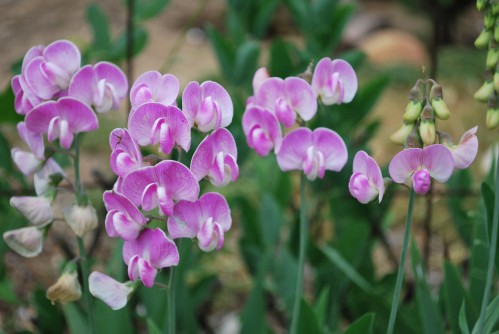 Besides growing your own edibles, it is a great idea to grow your own flowers for bouquets. Here is a simple country bouquet idea for an event I had this spring.
Besides growing your own edibles, it is a great idea to grow your own flowers for bouquets. Here is a simple country bouquet idea for an event I had this spring.
Flowers. My perennial sweet peas were abundant and in bloom. I have written about my lovely perennial sweet peas in more detail, Perennial Sweet Peas. Perennial sweet peas are easy to grow, bloom spring to summer, and return year and year. Perennial sweet peas are one suggestion. Let your garden dictate your bouquet.
Vessel. I collected Bulgarian yogurt jars back in the seventies. When traveling through Bulgaria, yogurt was sold in these simple-shaped wide mouth jars. Such a nice size, and an appealing shape. You can use any vessel you have on hand. Try using vessels which appeal to you and are a little out of the ordinary.
Embellishment. These Bulgarian jars are clear. For fun, and a little color, I lined the jars with peppermint geranium leaves. These leaves are very soft and fuzzy. They hold up well in water for several days. The leaves are the prettiest "Ireland" green which is fabulous with the various pinks of the perennial sweet peas. I could have added a pretty ribbon, or glass balls at the bottom of the jars.
In a way, this simple country bouquet from my garden is exactly what my dear friend, Debra Prinzing, and her photographer, David E. Perry, are trying to convey in their new book, The 50 Mile Bouquet: Seasonal, Local and Sustainable Flowers.
Please share if you are aware of local organic flower growers in your area? Please share if you create your own organic flower bouquets out of your own garden.

